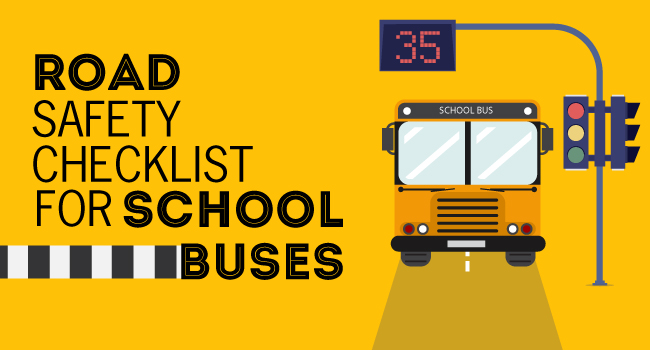Being a school bus driver is not easy. Not everyone understands and appreciates the massive responsibility of being a school bus driver. It takes some serious skills for drivers to effectively manage a school bus full of students. At times, it can be an irritating and frustrating task. They are not only responsible for ensuring a safely driving the school bus, but also for maintaining proper school bus discipline.
School bus drivers are often at the receiving end of some harsh statements from parents, commuters, etc. If you are a parent, there are some statements you should probably avoid making to a school bus driver. Remember, they are ensuring the safety of children on a regular basis. Lets take a look at them.
1. “No, I'll never allow my child to travel in a school bus as it is too dangerous”
Certainly, this is a wrong thing to say to a school bus driver. School bus safety is given utmost importance by everyone from the school bus manufacturers and school authorities to transport managers, drivers and attendants for ensuring better safety.
There are perpetual debates such as whether the presence or absence of a seat belt will reduce school bus accidents. While the debate might rage on for a long time, it is a fact that top padded seats protect students from crashes as they are seated high off the ground. And when you compare the number of car collisions with that of school bus collisions, you will find that a school bus is the safest transportation for your child.
2. “Haven't you noticed how my child got bullied on the school bus?”
It is yet another complaint you will say to a school bus driver. To be frank, it is a wrong accusation. You can imagine a large school bus full of students and hence it can be a difficult task for drivers to take care of each child. As a parent, you should tell your child to report about the bullying incident to drivers instantly. Only then, drivers will be able to know about it and take necessary action.
3. “Are you confident that it was my child behind it?”
Obviously, this accusation can be a great insult for drivers. They are the ones who witness every incident that happens in a school bus. Do you think they are visually impaired? They have a clear idea on the behavior of each student and it can never be a fake one. Hence, it is your duty to advise your child to behave properly inside the school bus.
4. “Actually, the other kid started the argument first”
Every parent try to protect their child but before protecting them, do ask driver about the incident. Before blaming another kid, ask your child about it. And anyway, if your child abused or attacked someone, it is not a right thing to do even though the other kid started it.
5. “Yeah, I know he/she is a troublemaker”
Literally, this means that, “I know my child is a nuisance but I'm not going to do anything about it”. As a parent, you are responsible for inculcating good behavior in your children. If your child misbehave to someone, do tell them that he or she is doing a wrong thing.
6. “Why can't the school bus come to my house?”
Before complaining something to the school bus driver, try to think about their role and responsibilities. School bus is not owned by a school bus driver, he is merely an employee appointed by school authorities. Like every employee, he is liable to follow the rules made by the school administrators. Hence, it is impossible to pick every child from their house as the authorities decide the most efficient route to reach the school quicker and driver have no permission to violate it.
7. “Sorry for being late”
Indeed, this is a wrong thing to say to a school bus driver. You should remember the fact that if you are coming late with your kid at the bus stop, you are making other kids late too. Never tell any silly excuses to the school bus driver as they didn't care about it. And, what they care most is to pick and drop every child at the scheduled time. Hence, it will be better not to make their task complicated.
8. “Sorry, I didn't see the bus”
This is one of the stupidest reasons you present before a school bus driver. Indeed, it is a huge lie as it is impossible for not noticing the big yellow school buses with flashing stop signs. Hence, it is better to be constant vigilant whenever you go near a school bus and above all, keep your big eyes open.
9. “I haven't passed your bus”
No, you should never say such thing to a school bus drivers. They will notice the number plates of vehicles that pass the school bus and immediately notify it to relevant authorities. Today, even the school bus students are trained to notice the number plates that illegally pass the school bus and hence, you could not escape easily by giving false reasons as there are more witnesses than you ever imagine.
10. “Do you seriously love your job?”
Usually, a school bus driver's job is not a glamorous one at all. But don't try to make them regret the job completely. There are people who do this job with intense interest and hence, it is better to never spoil their fun. It is their job and they know how to do it properly. Leave them alone.
As a parent, you should understand the fact that your child reaches home safely due to the school bus driver. And hence, learn to respect them and avoid unnecessary questioning.
“Being a school bus driver is not just a job… It's an adventure”




